
Roots
Consider the intricate spirals, the buoyant coils, the waves that trace stories through generations. Textured hair, in its myriad forms, carries ancestral whispers, a living archive of identity and resilience. For too long, the dominant beauty discourse marginalized these unique strands, overlooking their inherent strength and the profound wisdom embedded in their care.
Yet, beneath the surface of fleeting trends, a timeless tradition persists ❉ the use of plant oils. This practice, stretching back millennia, offers more than mere conditioning; it represents a continuum of ancestral knowledge, a tactile connection to heritage that speaks volumes about who we are and where we come from.

What is the Biology of Textured Hair?
At a fundamental level, textured hair possesses a distinct biological makeup that sets it apart. The elliptical shape of the hair follicle produces strands that coil and curve, granting them volume and a particular resilience. This curvature, while aesthetically striking, creates challenges for natural sebum distribution. Scalp oils struggle to travel down the winding shaft, leaving the ends prone to dryness and breakage.
This inherent characteristic made topical lubrication, especially with plant-derived oils, a logical and essential practice for ancestral communities living in diverse climates, particularly those with drier conditions. Think of the micro-structures ❉ the cuticle layers, the cortex, the medulla. Each component plays a part in the hair’s overall health and appearance. When these layers are lifted or compromised, moisture escapes, leading to fragility. Plant oils, by their very nature, work to seal these cuticles, offering a protective barrier.
Our understanding of hair anatomy, when viewed through a heritage lens, reveals that traditional care methods were often scientifically sound, predating modern laboratories. The practices of elders, passed down through spoken word and gentle touch, were empirical science in action, adapting to the biological needs of hair long before microscopes revealed follicular intricacies. The texture of a strand is not a flaw; it is a feature, a testament to genetic diversity and a living link to diverse Black and mixed-race legacies .

How Did Ancestors Categorize Textured Hair?
While modern classification systems (like Andre Walker’s 4c, etc.) attempt to categorize curl patterns, ancestral societies often understood hair texture through a different, more fluid lens. Their systems were not about numbered types for commercial products, but about how hair related to identity, status, and communal belonging. Hair was a visual language.
A coiled crown might signify wisdom, marital status, or a particular tribal affiliation. The very lexicon used to describe hair reflected social structures and cultural values.
- Social Markers ❉ Hair styles often communicated a person’s age, rank, or marital status within communities.
- Spiritual Conduits ❉ Hair, situated at the crown, was frequently viewed as a spiritual antenna, connecting individuals to the divine or ancestral realms.
- Community Narratives ❉ The act of styling hair, especially intricate braiding, was a communal activity, fostering social bonds and transmitting cultural stories.
These traditional understandings, deeply embedded in social and spiritual contexts, informed the choices of natural ingredients, including plant oils, used for hair care. The oils served not just a functional purpose of health and adornment but also a symbolic one, preparing the hair, the visible marker of self, for its role in communal life.

Ancient Echoes of Hair Care ❉ Traditional Plant Oils
Across the African continent, and among peoples of the African diaspora, plant oils and butters have held a central position in hair care for centuries, indeed, for millennia. These were not mere cosmetic additions; they were essential for maintenance and protection in varied climates. From the arid Sahel to the humid coasts, botanical wisdom guided generations.
| Traditional Oil/Butter Shea Butter (Vitellaria paradoxa) |
| Geographical Origin/Associated Cultures West Africa (Ghana, Mali, Burkina Faso Faso, Nigeria) |
| Historical Application for Hair Widely used as a moisturizer, pomade, and protectant against sun and harsh conditions; applied for shine and to soften hair. Used to stretch hair when warmed. |
| Modern Scientific Link/Benefit Rich in fatty acids (oleic, stearic) and vitamins A and E; deep hydration, emollient, anti-inflammatory, mild natural UV protection (SPF ~6). |
| Traditional Oil/Butter Castor Oil (Ricinus communis) |
| Geographical Origin/Associated Cultures Ancient Egypt, Indigenous cultures, West Africa, Caribbean |
| Historical Application for Hair Used for cleansing, conditioning, and promoting hair growth and strength. Cleopatra was said to use it for hair health. Later, vital in diasporic hair care. |
| Modern Scientific Link/Benefit High in ricinoleic acid, which promotes scalp circulation and can contribute to thicker hair growth. A humectant; forms a protective surface. |
| Traditional Oil/Butter Marula Oil (Sclerocarya birrea) |
| Geographical Origin/Associated Cultures Southern Africa (Mozambique, South Africa) |
| Historical Application for Hair Known for moisturizing properties and as a general hair and skin aid. |
| Modern Scientific Link/Benefit High in antioxidants and essential fatty acids, offering hydration and protection from environmental damage. |
| Traditional Oil/Butter Baobab Oil (Adansonia digitata) |
| Geographical Origin/Associated Cultures African continent, particularly Madagascar |
| Historical Application for Hair Used for shine, elasticity, and to reduce environmental damage. |
| Modern Scientific Link/Benefit Contains fatty acids that penetrate hair follicles, adding suppleness and aiding in dandruff elimination. |
| Traditional Oil/Butter Moringa Oil (Moringa oleifera) |
| Geographical Origin/Associated Cultures Ancient Egypt, parts of Africa |
| Historical Application for Hair Valued for lightweight texture, nourishment, and promoting overall hair health. |
| Modern Scientific Link/Benefit Rich in antioxidants, aids scalp health and hair growth. |
| Traditional Oil/Butter The journey of these oils, from earth to strand, reflects a continuous lineage of care and cultural knowledge within textured hair heritage. |
The origins of these practices are not always documented in written texts but are preserved in the living memory of communities and the practices that endure. Women in traditional African societies frequently massaged oils into their scalps, not only to keep hair healthy but also for protection against pests like lice, a practical consideration in times with limited access to water. This reveals a pragmatic wisdom married to spiritual and aesthetic aims.
Ancient plant oils served not just as conditioners but as integral elements of cultural identity and communal survival for textured hair.
Consider the Basara women of Chad, renowned for their use of chebe powder , a blend of herbs, seeds, and plants. Mixed with oils and butters, this paste is applied to hair and then braided, a process repeated regularly to keep hair moisturized and shielded from harsh environmental conditions. This practice, passed down for generations, is a testament to the effectiveness of natural ingredients in promoting significant length retention and overall hair health in textured hair types.
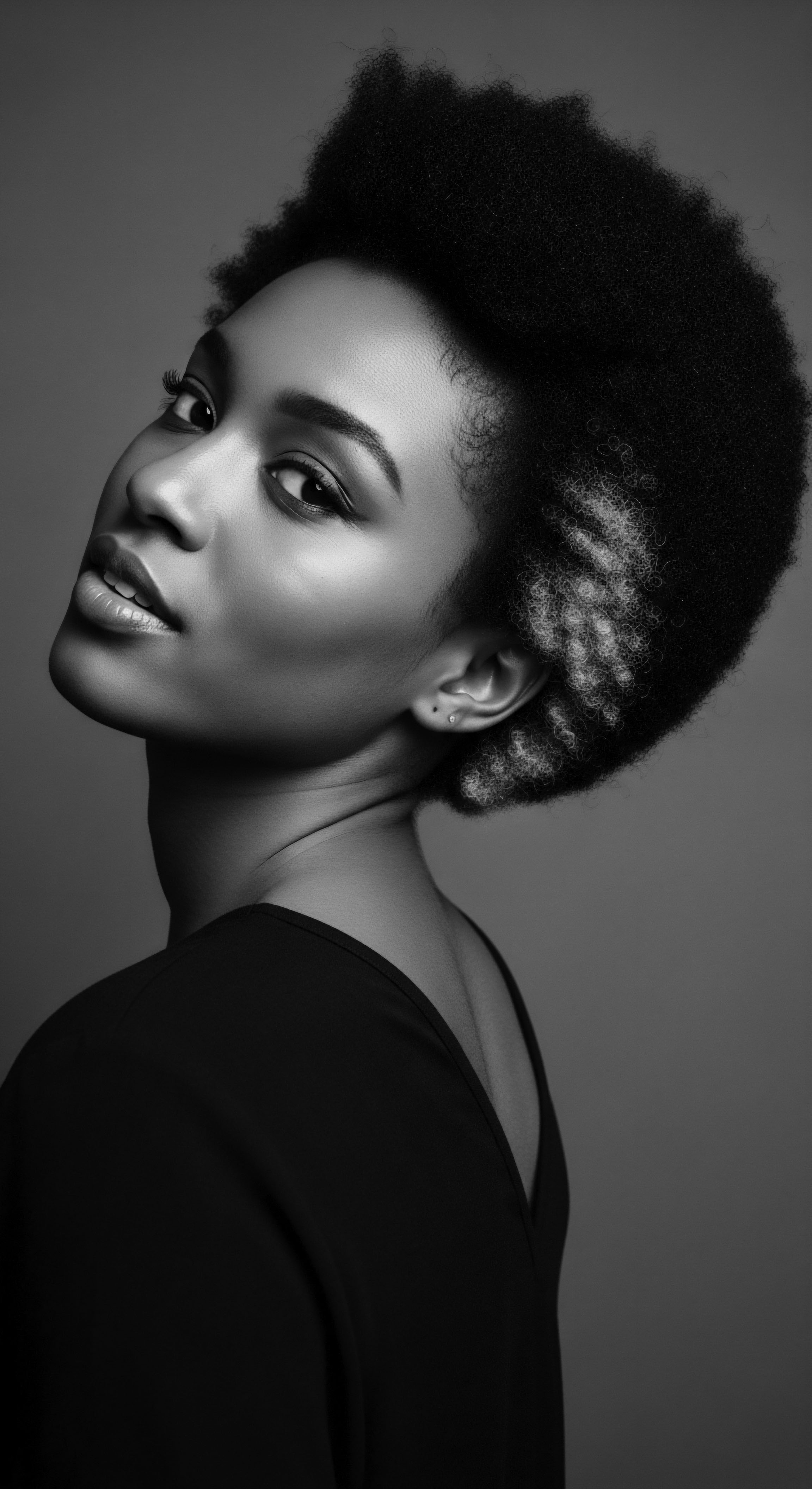
Ritual
Hair care, for those with textured hair, transcends mere hygiene; it is a ritual, a connection to the past, a statement in the present. The hands that detangle, the fingers that braid, the oils that nourish—each movement carries the weight of generations, an unspoken dialogue with those who came before. These are not simply methods; they are ceremonies of self-care, cultural preservation, and identity affirmation. The inclusion of plant oils within these rituals has been a constant, a tender thread running through time.
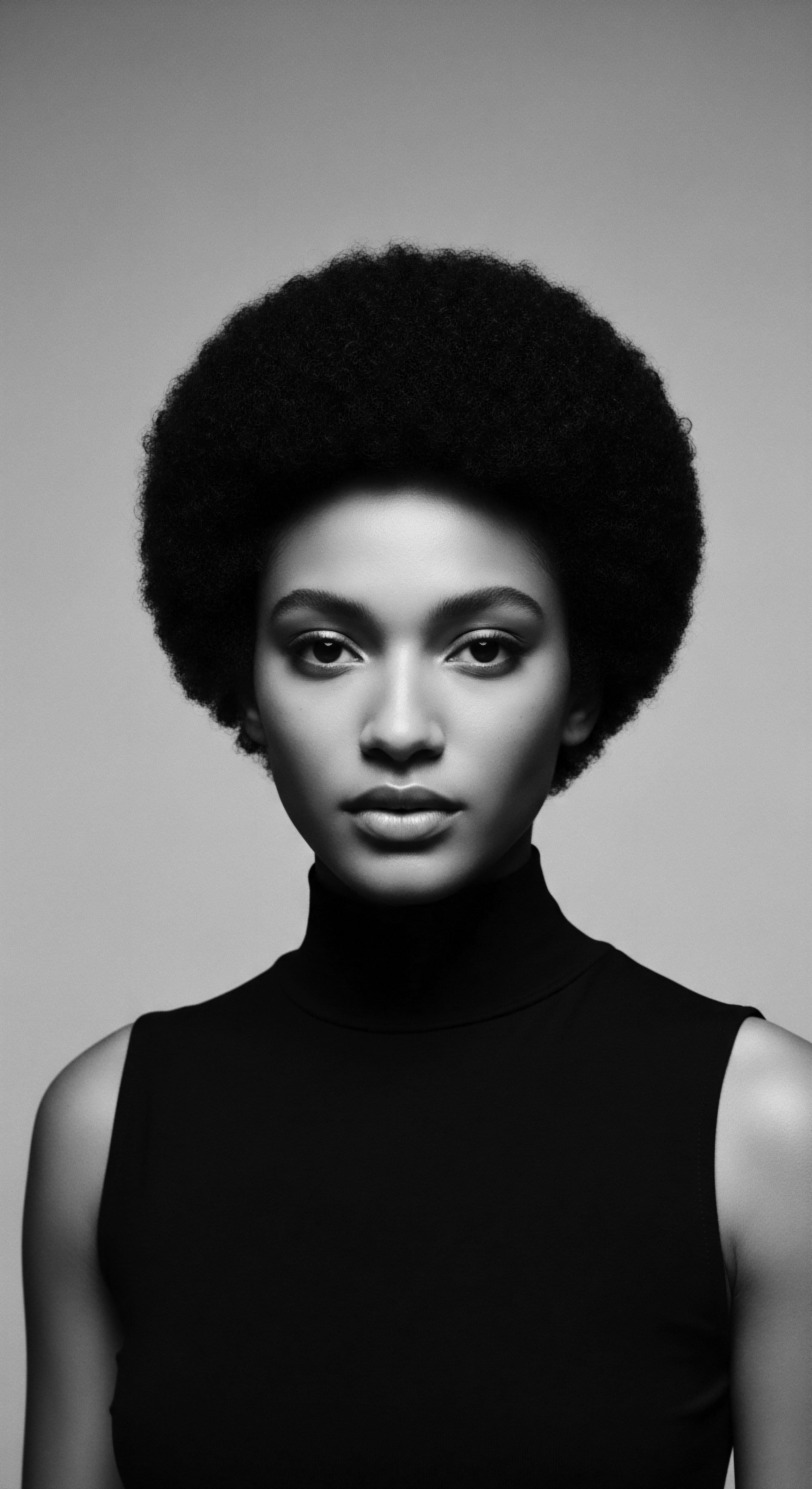
How do Traditional Styling Techniques Honor Ancestry?
Traditional styling techniques, from intricate braiding to powerful coils, are more than aesthetic choices. They are living archives of cultural memory, each pattern carrying historical context and symbolic weight. Styles often convey messages about social status, age, marital status, or tribal affiliation.
The time-intensive nature of many of these styles fostered communal bonds, with the act of hair grooming becoming a shared space for storytelling and connection. These were not solitary acts but communal endeavors, reaffirming kinship and community ties.
Protective Styles, for instance, have deep ancestral roots. Braids, twists, and cornrows, often made pliable and resilient with plant oils and butters, shielded delicate strands from environmental aggressors, preventing breakage and aiding length retention. The Himba tribe in Namibia, for example, mixes ground ochre, goat hair, and butter to dreadlock their hair, providing sun protection and ease of detangling. Such practices speak to an ingenious adaptation to environmental conditions, using readily available natural resources.
These historical forms were not only about practicality; they were expressions of art. Hand-carved combs, often made of ebony, rubber wood, or mahogany, served not only for detangling but also as cultural artifacts, bearing symbols of tribal identity or spiritual meaning. These combs, discovered in archaeological digs dating back over 5,500 years in Kush and Kemet, underscore the ancient reverence for hair and its tools.

What Role Did Oils Play in Ancient Hair Transformations?
The application of plant oils was integral to these styling rituals, facilitating manipulation and enhancing the hair’s natural qualities. Oils reduced friction, allowing for smoother braiding and detangling, which is especially important for textured hair prone to tangles and breakage. They provided lubrication, giving hair a desired “slippery” feel that may have been considered a mark of beauty.
Consider the ancient Egyptians, who relied on plant oils like Moringa Oil, Almond Oil, and Pomegranate Oil to maintain healthy, strong hair in harsh desert climates. These oils hydrated, enhanced shine, and prevented breakage, forming a central part of their hair care regimens. Cleopatra herself reportedly used castor oil to maintain her iconic, lustrous hair. These were often mixed with other natural ingredients like honey or beeswax to create masks that promoted growth and added shine.
Beyond simple application, heating practices were also common. In Ghana, women would warm metal combs, dip them in Shea Butter, and use them to comb through hair. This softened and stretched the hair, making it more manageable for styling. This demonstrates an early understanding of how heat could be used in conjunction with emollients to manipulate hair texture, a precursor to modern heat styling, yet rooted in ancestral practices and natural ingredients.
The ritual of applying plant oils transformed care into ceremony, deepening connection to self and community across generations.
The legacy of these ancient practices resonates in modern routines. Many contemporary stylists and individuals caring for textured hair still employ warming techniques or apply oils before stretching or styling, unknowingly repeating gestures that span centuries. The modern-day practice of “pre-pooing” with oil, where oils are applied before shampooing to protect strands from stripping, echoes ancient methods of protecting hair from damage.
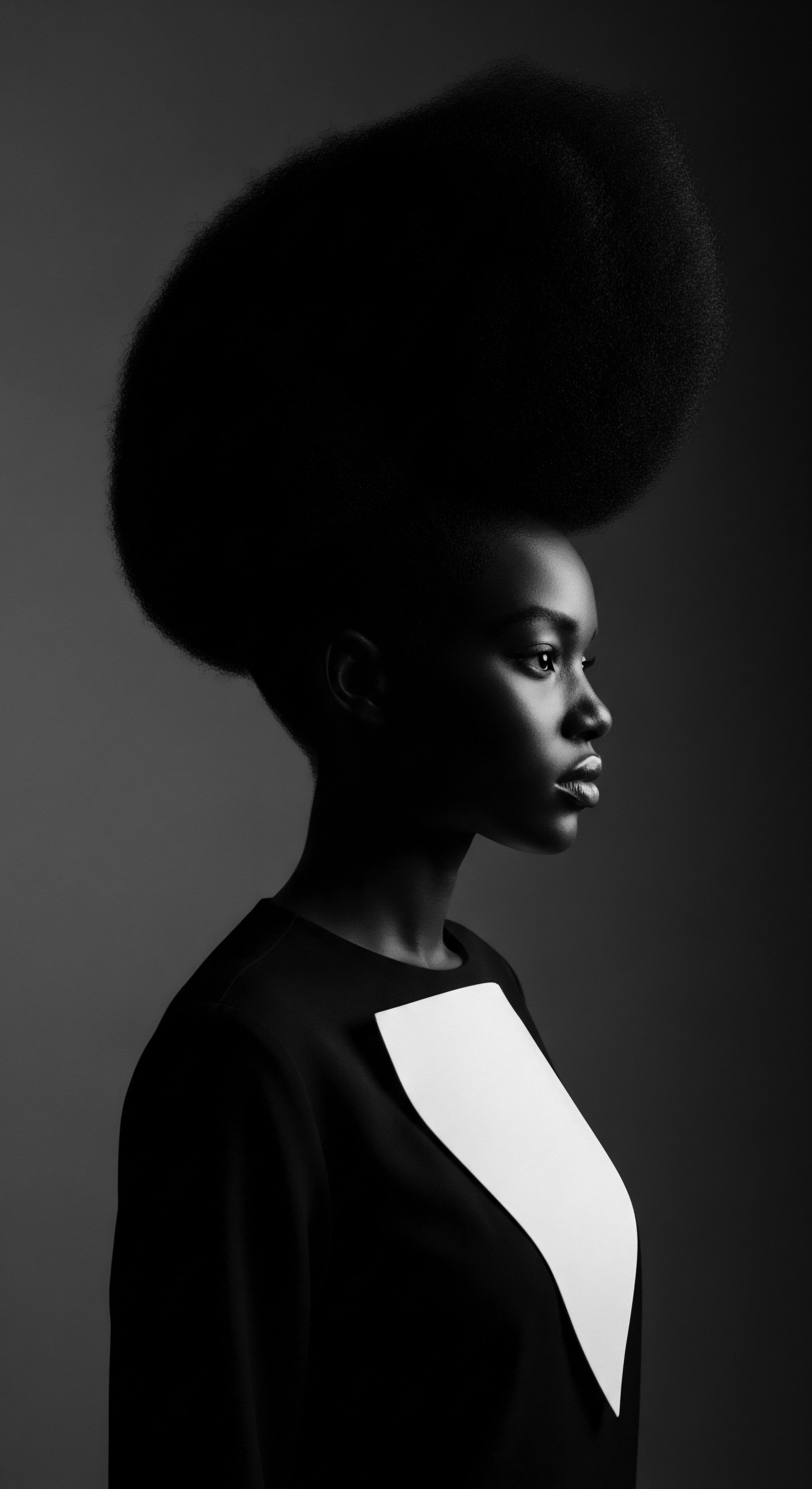
Relay
The wisdom carried forward, passed hand to hand through generations, is the truest relay. Our ancestors’ empirical observations, honed through countless applications of plant oils, laid the groundwork for contemporary textured hair care. This section examines how ancestral practices inform and are often validated by modern scientific understanding, bridging ancient knowledge with the present-day pursuit of holistic hair wellness.
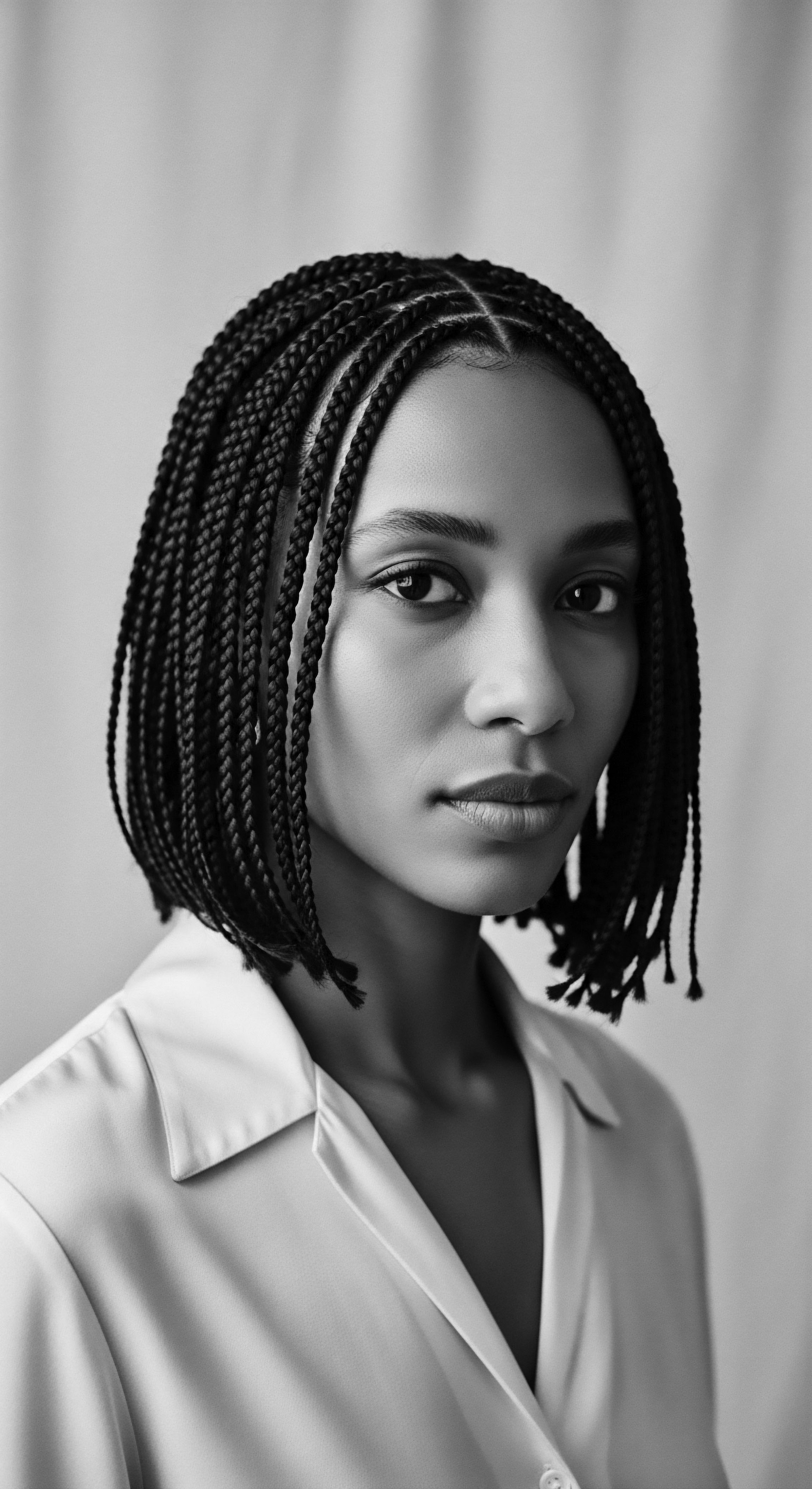
How Do Modern Formulations Honor Ancient Wisdom?
Today’s textured hair care market, booming with specialized products, often incorporates traditional plant oils, albeit in refined or blended forms. While ancient hair care was often about simple, unrefined natural ingredients, contemporary products frequently combine these ingredients with scientific advancements for enhanced stability, absorption, and targeted delivery. This fusion aims to retain the benefits known for centuries while addressing modern consumer needs.
Consider the widespread presence of Shea Butter and Coconut Oil in many popular textured hair products today. These are not arbitrary choices; they represent a conscious return to ingredients whose efficacy has been demonstrated through continuous generational use. Shea butter, for example, with its rich content of fatty acids and vitamins A and E, offers deep hydration and protection, properties recognized by African women for centuries to soothe skin and hair. Coconut oil, revered for its ability to penetrate the hair shaft, aids in reducing protein loss and repairing damage, a benefit supported by current research.
Modern formulations also consider hair porosity and thickness, adapting traditional oil applications. Thicker, coarser, or coily hair textures, which tend to be drier, usually necessitate heavier oils for effective strand coating and penetration. This aligns with historical practices in West African traditions, where heavier oils and butters were used to moisturize hair in hot, dry climates.
| Aspect of Use Preparation |
| Traditional Practice (Ancestral Heritage) Often raw, unrefined butters and oils; simple infusions with herbs; manual extraction processes (e.g. boiling shea nuts). |
| Modern Application (Informed by Heritage) Refined, cold-pressed oils; complex blends with extracts; often part of larger formulations (shampoos, conditioners, styling creams). |
| Aspect of Use Application Frequency |
| Traditional Practice (Ancestral Heritage) Regular, sometimes daily, application based on climate and style maintenance; often communal ritual. |
| Modern Application (Informed by Heritage) Varies by product and hair need (e.g. weekly oil treatments, daily leave-ins); personal routine; emphasis on product layering. |
| Aspect of Use Purpose |
| Traditional Practice (Ancestral Heritage) Moisture, protection from elements/pests, styling aid, spiritual significance, identity marker, communal bonding. |
| Modern Application (Informed by Heritage) Hydration, frizz reduction, shine, strength, growth promotion, detangling, damage prevention. Also, a conscious reconnection to heritage. |
| Aspect of Use Tools Employed |
| Traditional Practice (Ancestral Heritage) Hand-carved wooden, bone, or ivory combs and picks; hands. Sometimes heated metal combs. |
| Modern Application (Informed by Heritage) Wide-tooth combs (often plastic or specialized wood); finger detangling; various brushes; heat tools with protective oils. |
| Aspect of Use Community Aspect |
| Traditional Practice (Ancestral Heritage) Strong communal activity; shared knowledge transfer; cultural preservation. |
| Modern Application (Informed by Heritage) Online communities, shared tips, product reviews; still a space for cultural expression, though often less physically communal. |
| Aspect of Use The journey of plant oils in textured hair care illustrates a continuous adaptation and celebration of inherited wisdom. |

What Scientific Validation Supports These Ancient Practices?
Modern science, in many instances, offers compelling explanations for the efficacy of traditional plant oil uses. The molecular structure of certain oils allows them to interact uniquely with the hair shaft. For instance, the lauric acid present in Coconut Oil possesses a low molecular weight and linear structure, enabling it to penetrate the hair cuticle and reduce protein loss both before and after washing. This scientific finding validates centuries of anecdotal evidence about coconut oil’s restorative properties.
Other oils, while not necessarily penetrating the hair shaft, create a protective lipid layer on the hair surface, sealing in moisture and guarding against environmental stressors. This is particularly true for oils with a higher concentration of oleic acid, which act as excellent sealants. The combined action of penetrating and sealing oils mirrors the protective strategies employed by ancestors.
The deep, ancestral connection to plant oils for textured hair care finds powerful echoes in modern scientific understanding.
Research also points to specific compounds within plant oils that contribute to scalp health and hair vitality. Castor Oil‘s ricinoleic acid, for example, is known to boost circulation to the scalp, potentially encouraging hair growth. Rosemary Oil, while not traditionally an African hair oil, has been shown to improve blood circulation to the scalp and promote hair growth, sometimes even more effectively than synthetic alternatives, albeit with large error bars in studies. This convergence of traditional knowledge and scientific inquiry strengthens the argument for the enduring value of natural remedies.
One powerful historical example highlighting the enduring heritage of plant oil use in textured hair care, especially within the context of Black and mixed-race experiences, is the continued reliance on these ingredients during and after the transatlantic slave trade. As enslaved Africans were stripped of much of their cultural identity, including hair care tools and rituals, they ingeniously adapted, using available natural resources. Instead of traditional shea butter or indigenous plant infusions, some resorted to alternatives like bacon grease, butter, or kerosene, desperate to maintain hair health and a connection to ancestral practices, however modified. This speaks volumes about the intrinsic understanding of the need for emollients for textured hair.
Even after emancipation, early Black hair care pioneers like Madam C.J. Walker , born Sarah Breedlove, built empires on products that, while sometimes containing petroleum jelly, also incorporated ingredients like Coconut Oil and Beeswax, drawing on established, centuries-old remedies for scalp health and hair growth. This demonstrates a continuous line of knowledge, where even under duress and through adaptation, the fundamental principle of using natural oils and butters remained central to preserving the health and dignity of textured hair. This commitment to traditional ingredients, even when constrained by circumstance, underscores the deep-seated legacy of plant oil use in Black hair care as a symbol of resilience and cultural continuity.
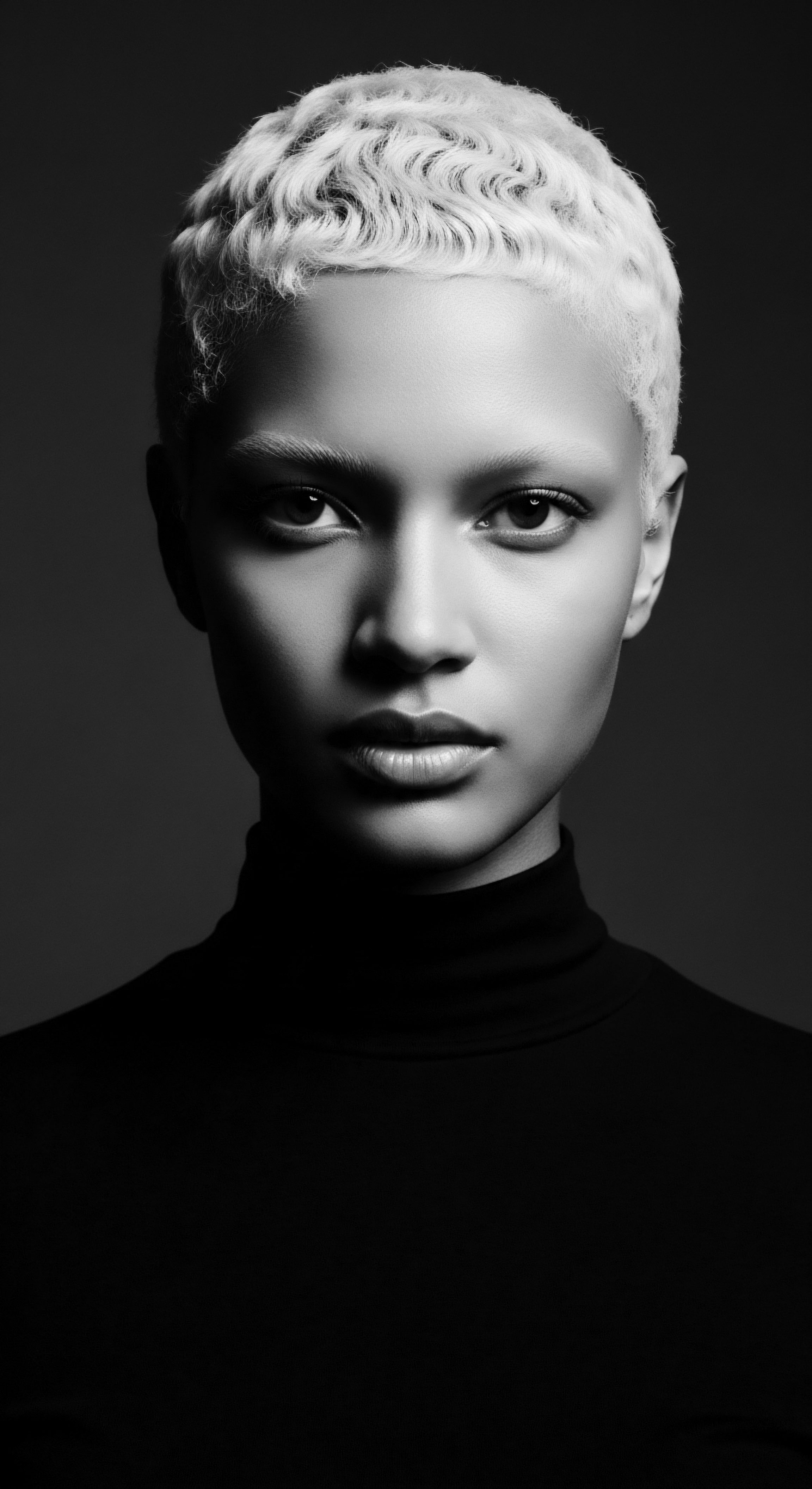
How Does Ancestral Wellness Guide Modern Hair Practices?
Beyond the chemical composition, the spirit of ancestral wellness practices offers a profound guide for contemporary textured hair care. Ancient rituals were often communal, emphasizing touch, connection, and intention. This holistic outlook views hair care not as an isolated task but as an integral aspect of overall wellbeing—a notion increasingly championed in modern wellness circles. The emphasis on scalp health, for instance, a cornerstone of many traditional practices including hair oiling, is now scientifically recognized as fundamental to hair growth and vitality.
The wisdom of elders who massaged oils into scalps to stimulate growth and cleanse, even in the absence of modern shampoos, points to an intuitive understanding of microcirculation and the importance of a clean environment for follicles. Today, practices like scalp massages with fermented oils are recognized for their ability to improve circulation, reduce shedding, and promote growth. This demonstrates a beautiful loop ❉ ancient knowledge, sometimes lost or suppressed, is now being reclaimed and re-validated by contemporary research, affirming the enduring power of ancestral insights in shaping a more authentic and effective approach to textured hair care. The conscious choice to return to these historical ingredients and methods is, for many, an act of self-affirmation, a way to connect with a powerful lineage of resilience and beauty .
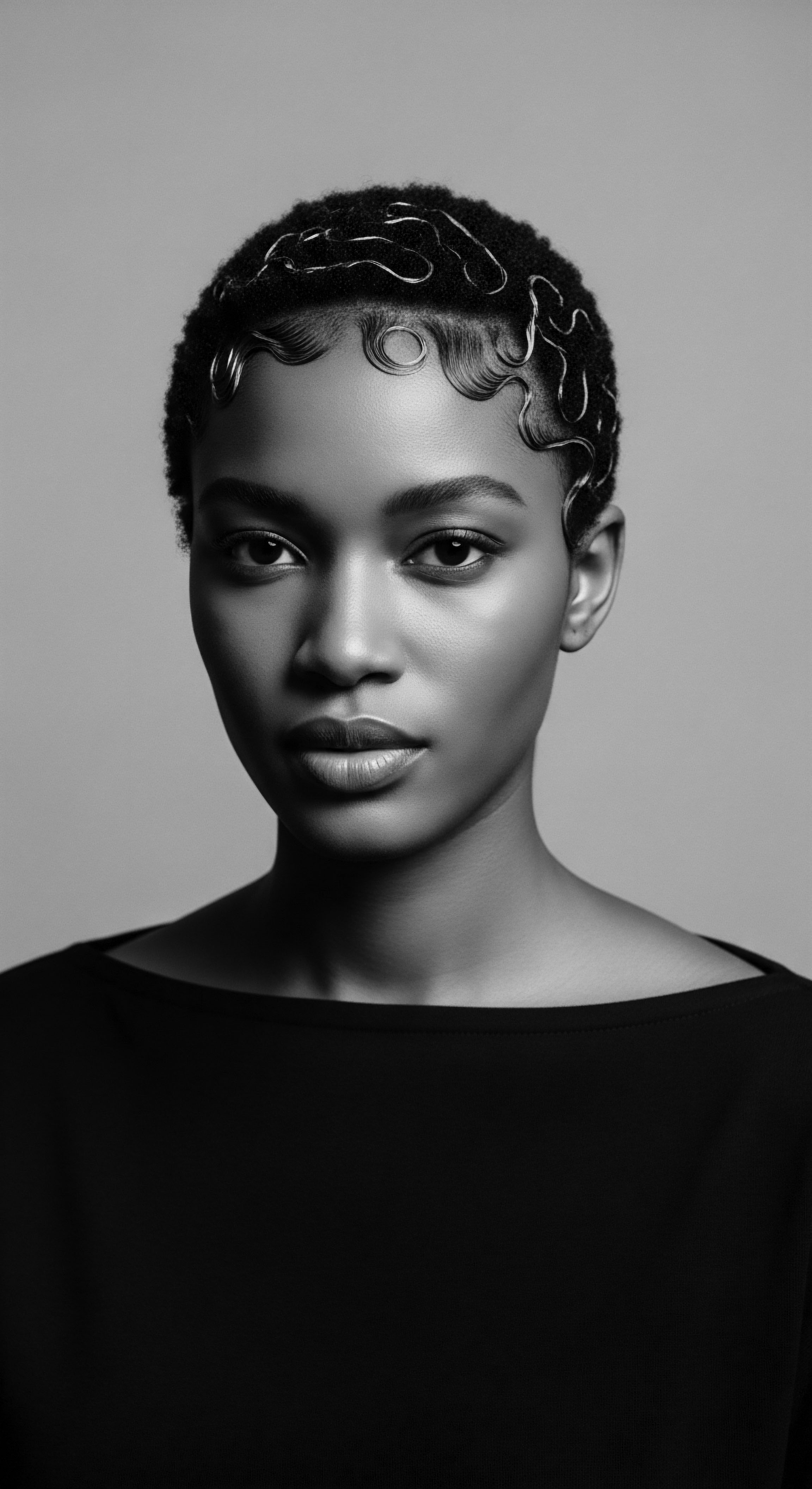
Reflection
The journey through the enduring heritage that links traditional plant oil uses to modern textured hair care is more than an academic exercise; it is a meditation on memory, identity, and the enduring power of the human spirit. Each drop of oil, each carefully applied butter, carries the weight of centuries, a silent testament to the ingenuity and wisdom of those who came before us. For textured hair, often seen through a distorted lens of deficit rather than design, this heritage provides a counter-narrative of strength, beauty, and profound ancestral connection.
The echoes from the source remind us that hair, in its very biological structure, called for gentle, protective care, a need met by the generous offerings of the earth. The ritual, deeply communal and spiritual, transformed a daily necessity into a profound act of self-love and cultural affirmation, a tender thread connecting us to collective stories. And the relay, the continuous passing of this wisdom, shows us that far from being superseded, ancient practices are often validated by modern science, forming a vibrant, living archive that continues to teach and inspire.
The Soul of a Strand, truly, is found within this rich continuum. It is in the knowledge that the very oils we reach for today bear the legacy of hands that knew their purpose instinctively. It is in recognizing that our hair, in its diverse forms, is a crown of history, a symbol of perseverance, and a vibrant canvas for cultural expression. As we continue this journey of understanding and care, we are not simply tending to our physical selves; we are honoring a sacred lineage, allowing the ancestral whispers to guide our path towards an unbound future for textured hair.

References
- Diop, Cheikh Anta. Precolonial Black Africa ❉ A Comparative Study of the Political and Social Systems of North and South Africa. Lawrence Hill Books, 1987.
- Falconi, M. “African Shea Butter ❉ A Pan-African Commodity.” Journal of Marketing of Africa, 2011.
- Kerharo, Joseph. La Pharmacopée Sénégalaise Traditionnelle ❉ Plantes Médicinales et Toxiques. Vigot Frères, 1974.
- McCreesh, N. C. A. P. Gize, and A. R. David. “Ancient Egyptian Hair Gel ❉ New Insight into Ancient Egyptian Mummification Procedures through Chemical Analysis.” Journal of Archaeological Science 38, no. 12, 2011.
- Rele, A. S. and R. B. Mohile. “Effect of mineral oil, sunflower oil, and coconut oil on prevention of hair damage.” Journal of Cosmetic Science 54, no. 2, 2003.
- Roy, R. K. M. Thakur, and V. K. Dixit. “Hair growth promoting activity of Eclipta alba in male albino rats.” Archives of Dermatological Research 300, no. 7, 2008.
